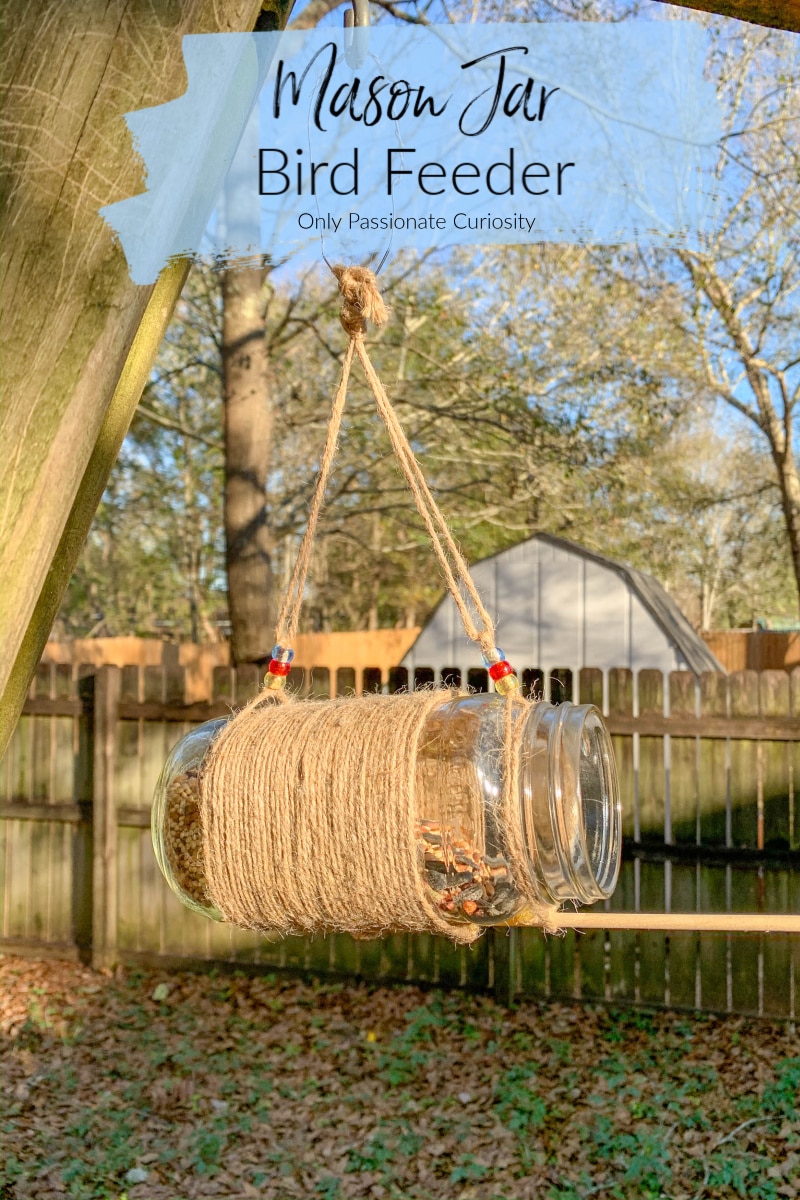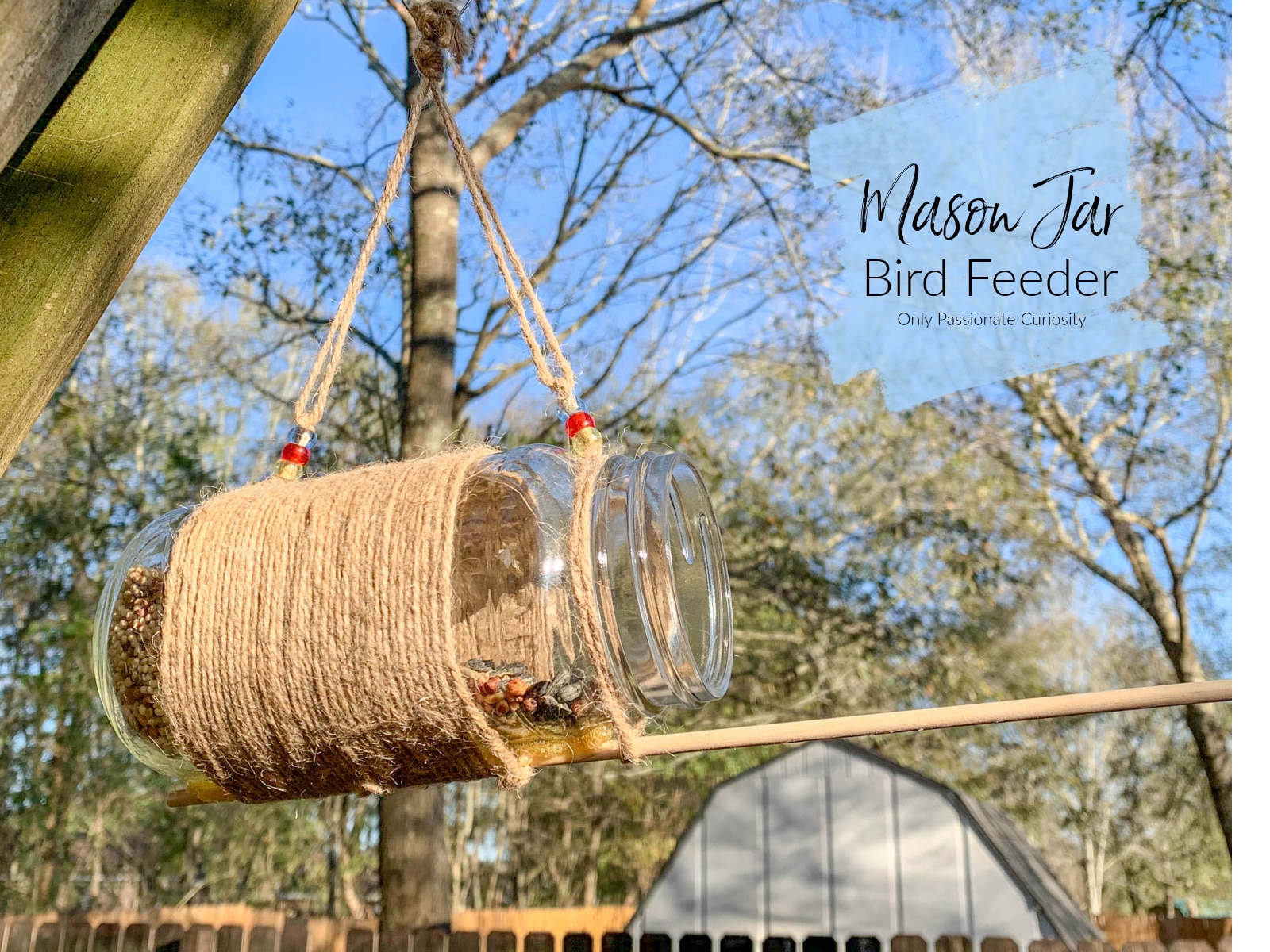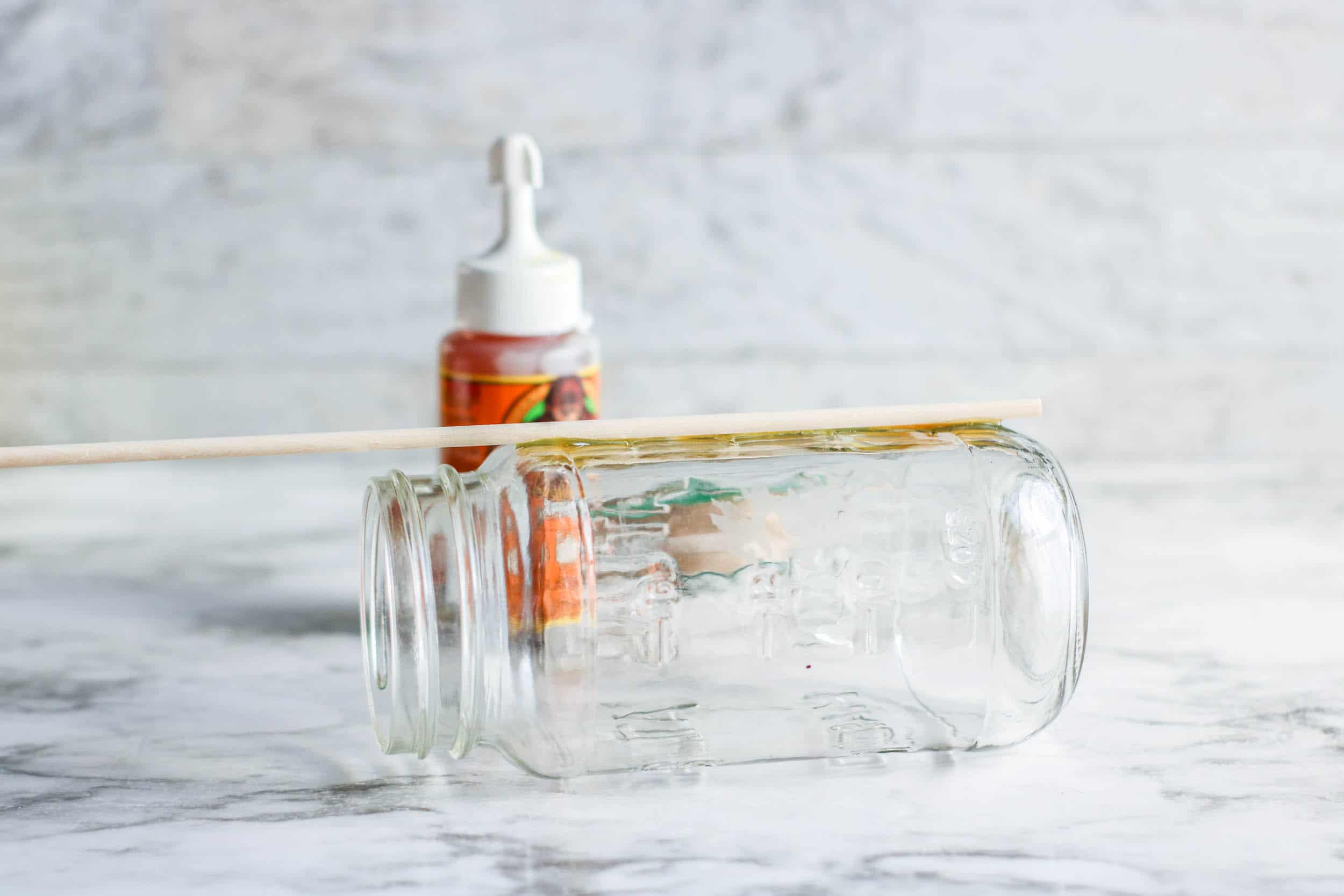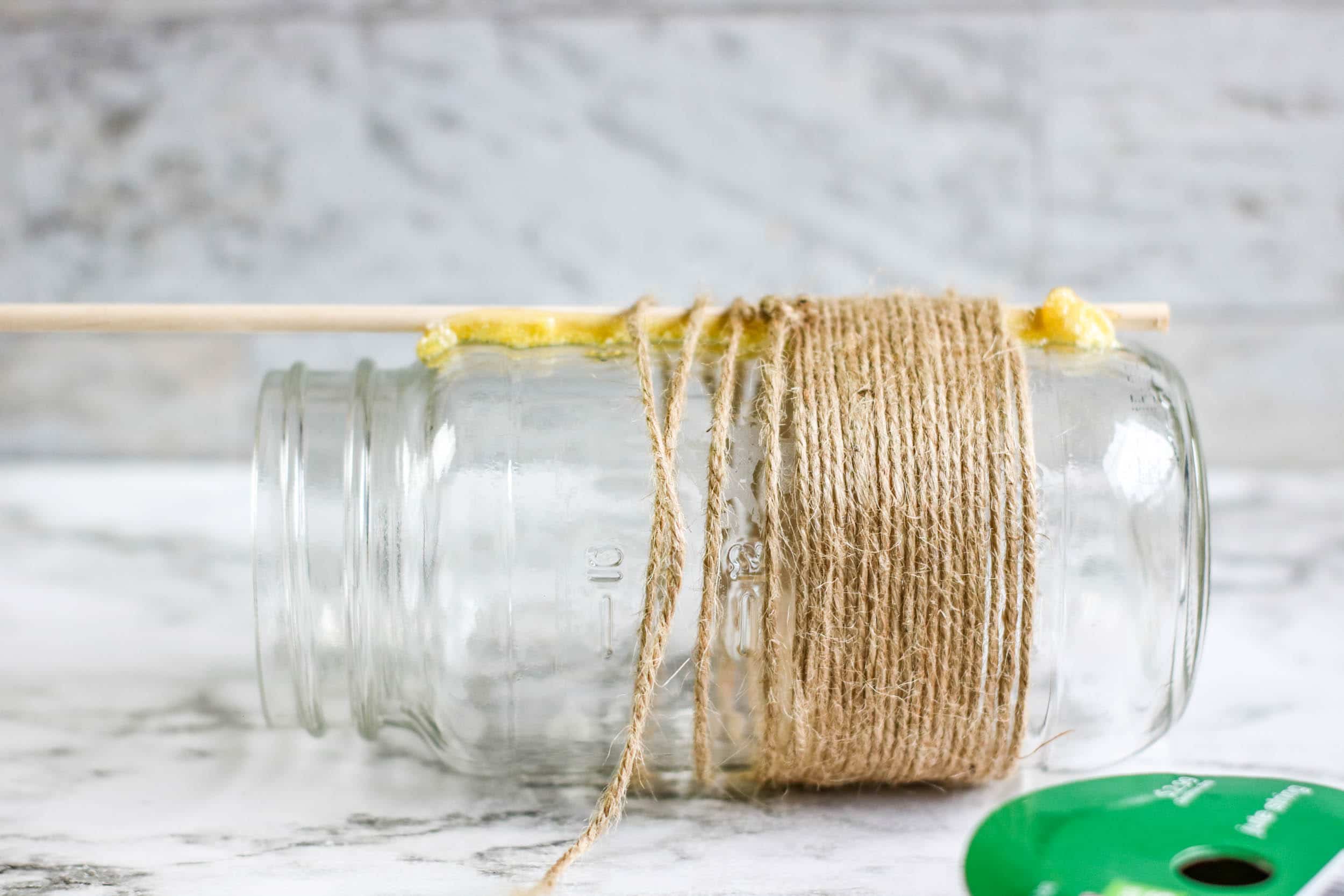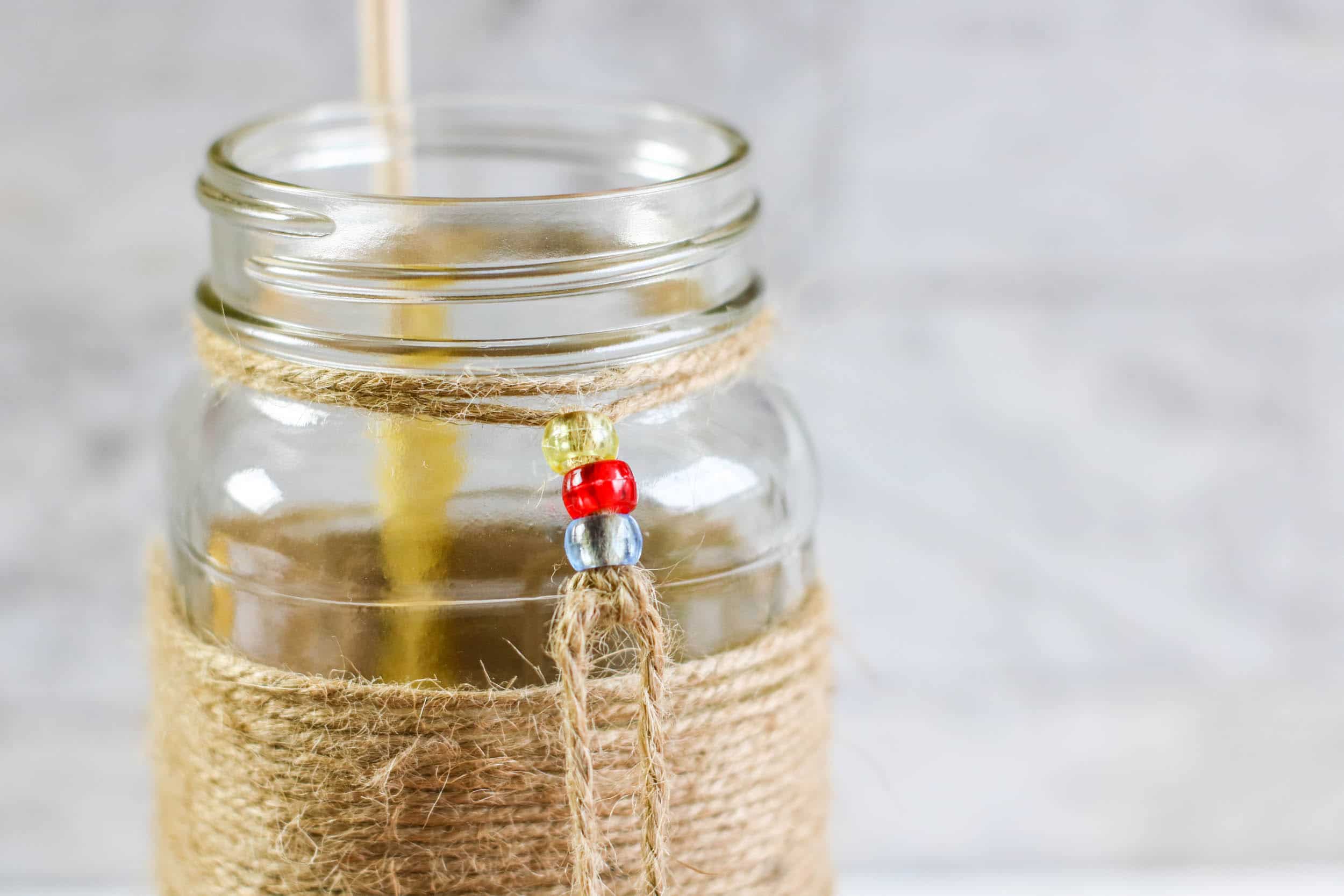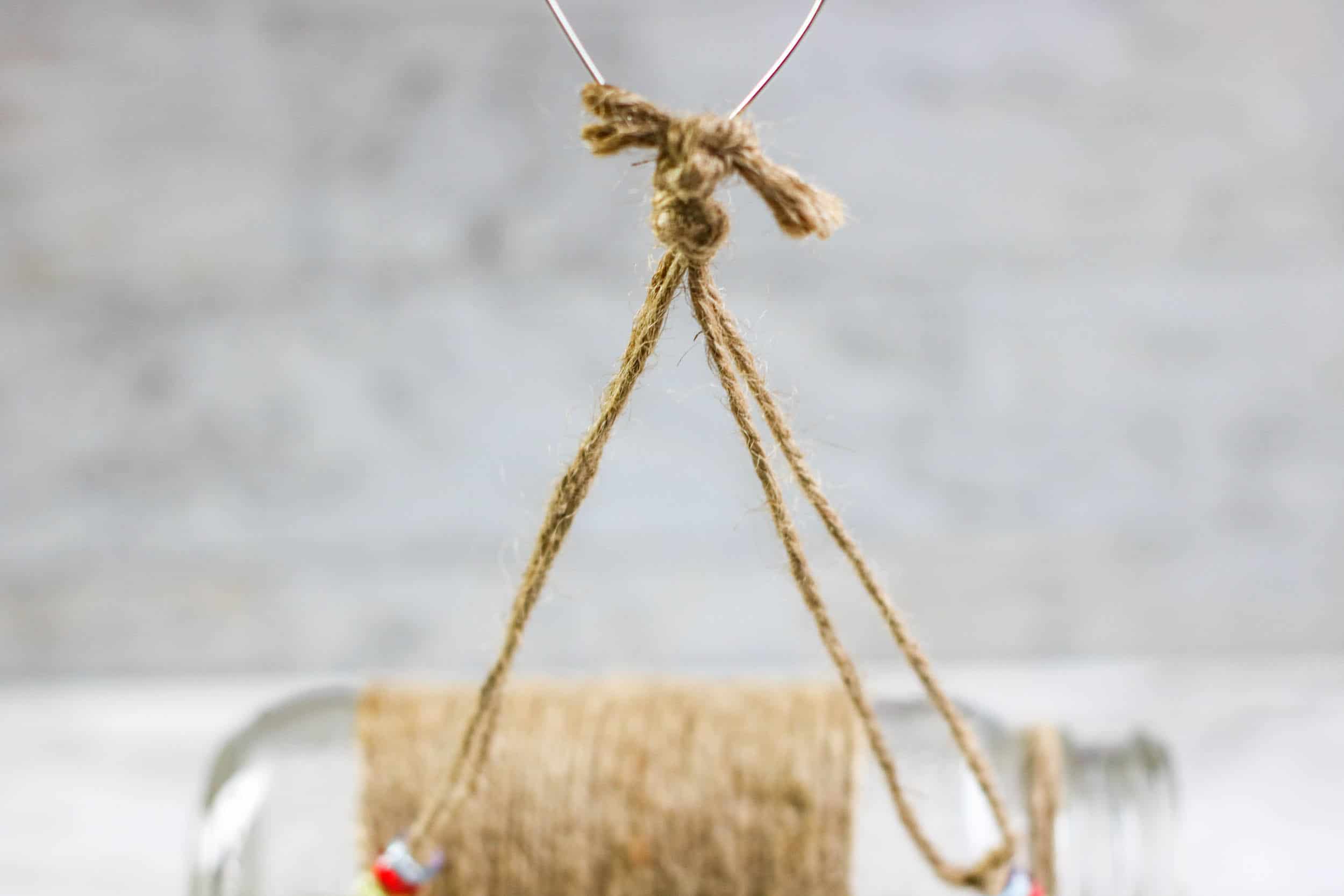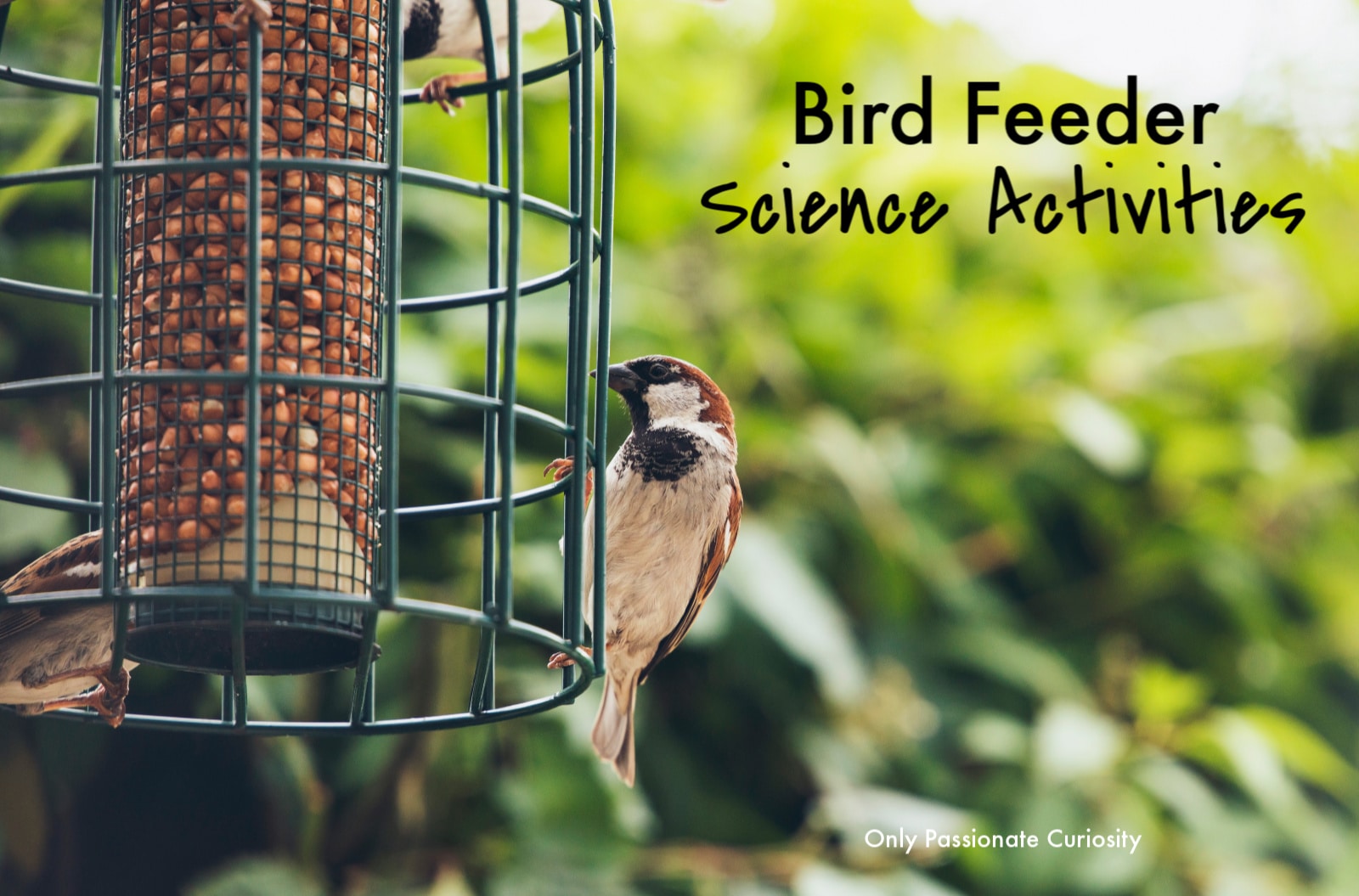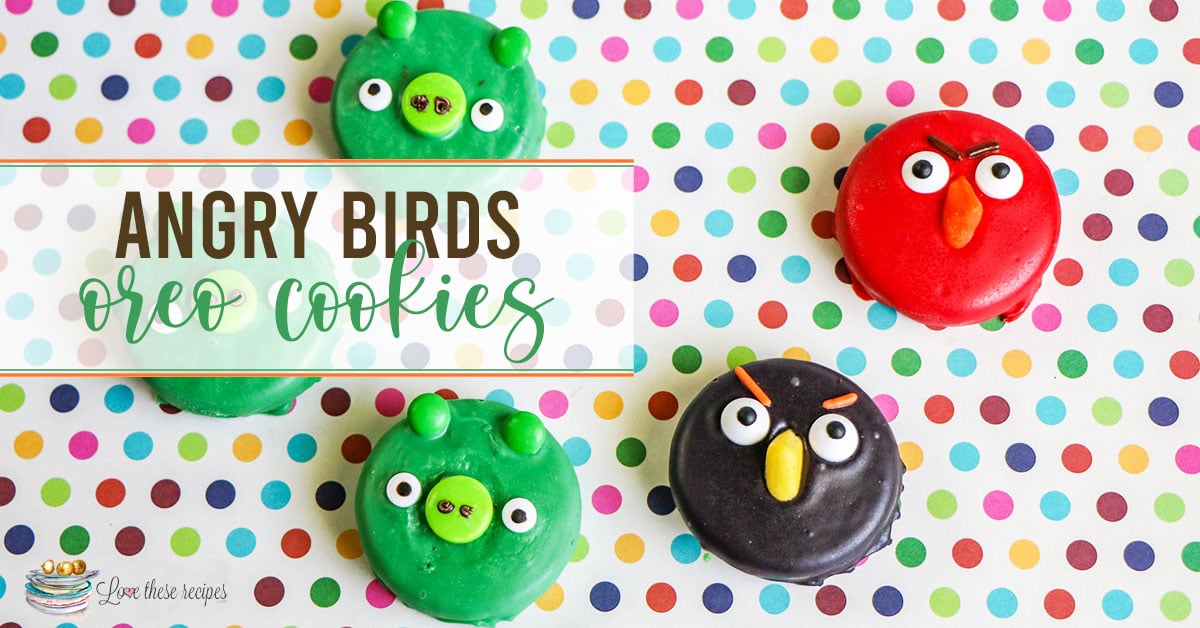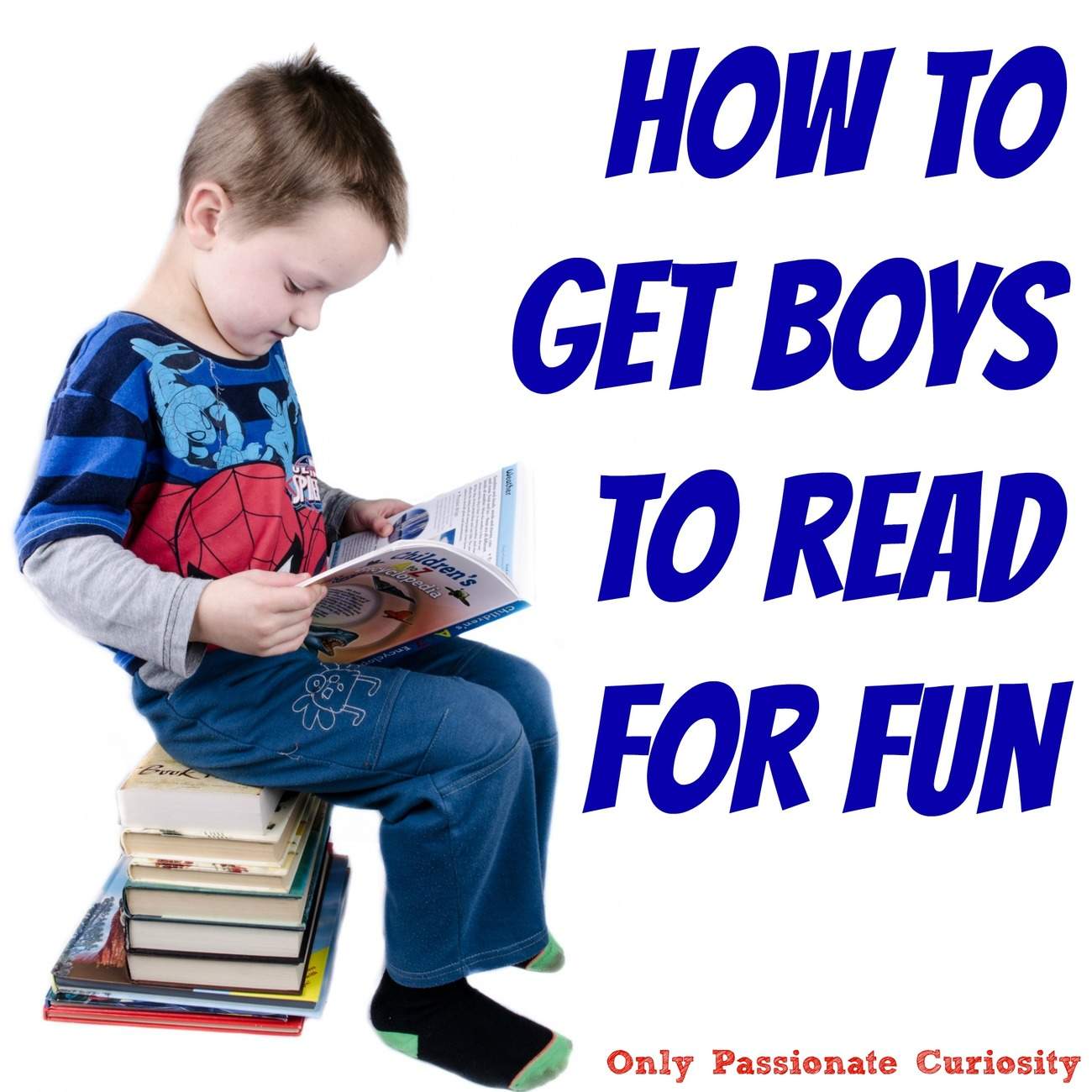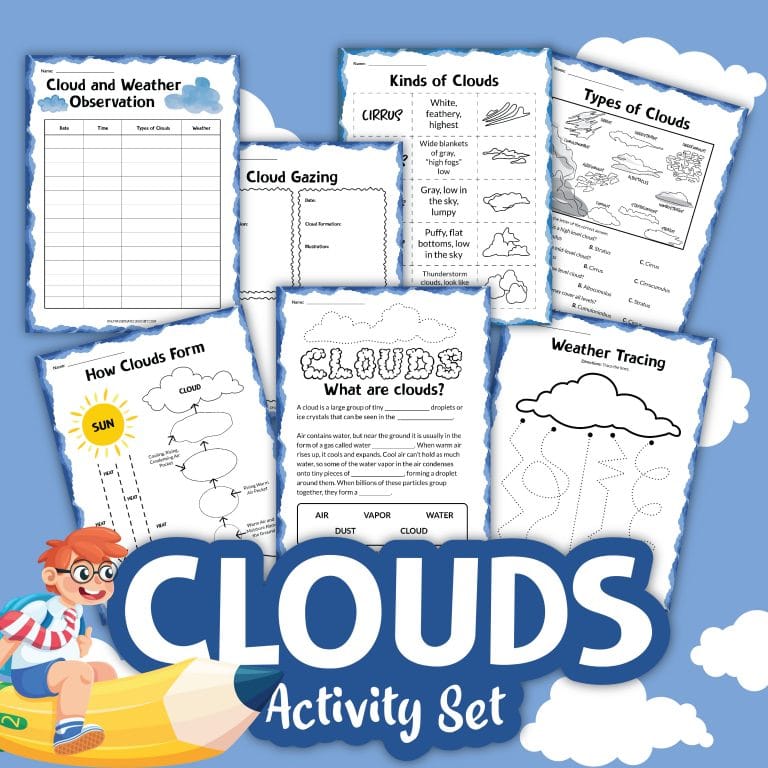Mason Jar Bird Feeder and Bird Feeding Information (with printable instructions)
Mason Jar Bird Feeder
Making mason jar bird feeder is a fun activity for kids! And when it’s easy and turns out to be as pretty as this one, there’s no reason not to do it! You’ll only need a few supplies and a little bit of time to make this one, and it could lead to hours of fun bird observation with your children.
Supplies:
Mason jar (You probably already have one of these around the house. If not, you can use a clean and dry pasta jar.)
1 wooden dowel (approximately ¼ to ½ inch diameter and at least 10 inches long)
Clear pony beads (optional)
Scissors
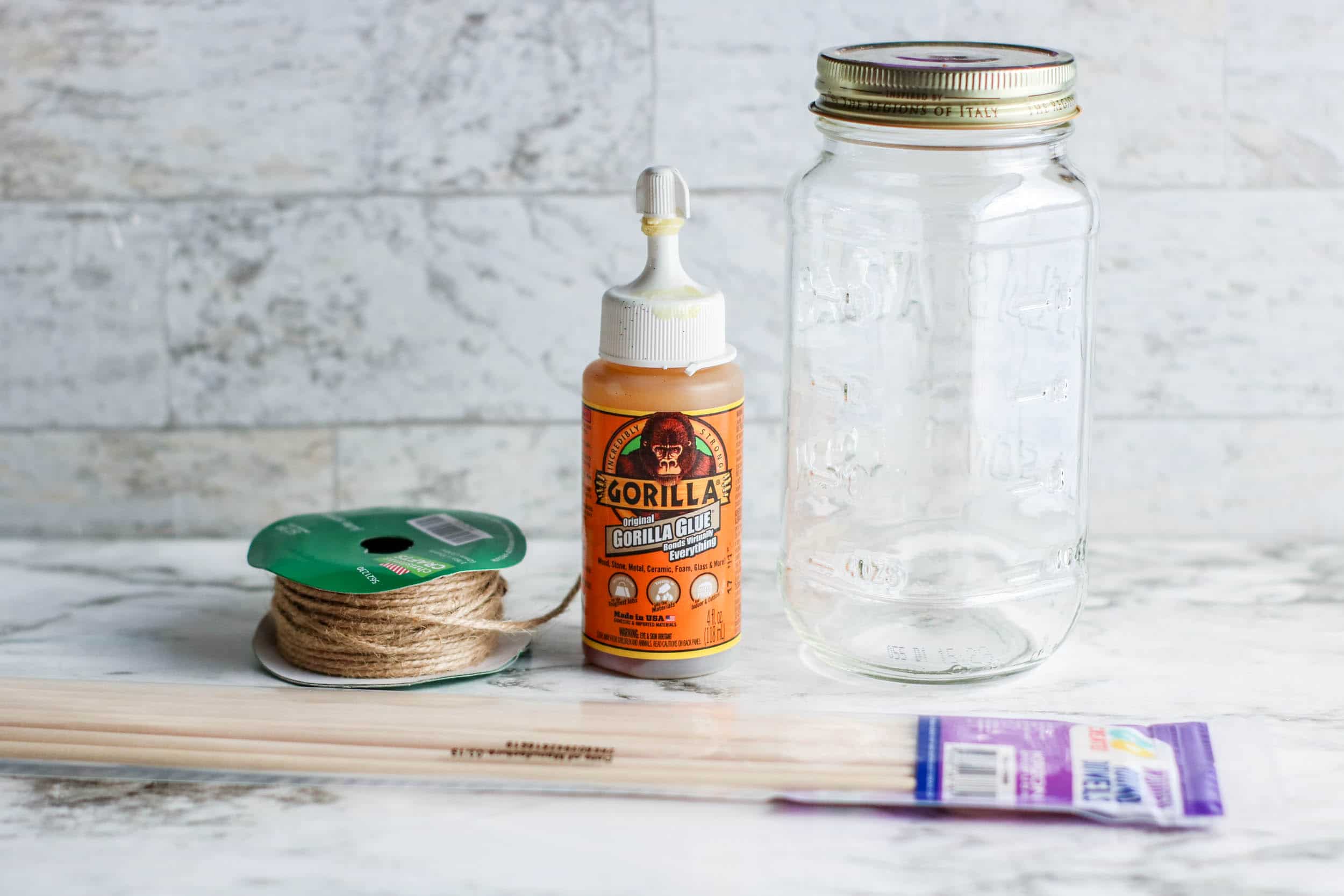
2. Wrap the jute cord around the jar and dowel. When the jar is covered to your liking, tie off the jute twine and cut the end.
3. Use two additional pieces of jute twine (approximately 36 inches long each) to wrap around the jar’s mouth. Repeat at the bottom (wrapping around the dowel to help hold it securely).
4. If desired, thread the twine at the mouth of the jar with pony beads. Repeat at the bottom of the jar.
5. Bring the twine from the mouth and bottom of the jar together and knot well to create a place for the bird feeder to hang.
6. Fill the jar about halfway with birdseed. Hang from a tree, clothesline, fence, or plant hanger.
Bird Feeding During Summer
Does feeding birds from feeders cause them to become dependent?
I’ve heard that it’s not a good idea to feed birds from bird feeders, but according to this information, feeding birds does not make them dependent on bird feeders.
Summer bird feeders are helpful to parent birds.
Summer can be a great time to feed birds from your feeder because parent birds can benefit from this extra food while they’re busy caring for babies! Also, feeding birds during the summer will help cause them to return to your yard each summer for a reliable supplemental food source, and you’ll be able to enjoy them year after year!
You may get to see baby birds!
If you’re lucky, you may have birds build nests in your yard. One summer (before a stray kitty took up residence under our carport) we had a bird build a nest and lay eggs in a box under our carport. It was so much fun waiting for the eggs to hatch and then watching the mother bird feed and care for her babies. It was a little bit sad when they flew the nest, but we wished them well and had lots of happy memories!
Birds are their prettiest during summer.
During the summer is when birds are in their breeding season, so it’s also when they’ll be showing off their most beautiful colors! This not only makes them pretty to look at, but it also makes them easier to identify.
You’ll see birds that only visit during summer.
If you only bird watch during the winter, you’ll miss some bird species that only visit during the summer. Bird watching can be a year-round activity!
What kind of food should you put in your bird feeder?
Sunflower seeds are one of the most popular kinds of bird seed. You can put out other kinds of seeds or mixes, though. You may also want to offer fruits (like pieces of apple or orange, fresh or dried mealworms, or even peanuts. (Just don’t use seasoned or flavored nuts. And don’t use peanut butter since it gets sticky during summer and can stick to birds’ feathers. It also goes bad quickly on hot days.) You could use no-melt suet mixes during the summer too since these can stand up to summer heat. And of course you can put nectar in hummingbird feeders too–as long as you change it out every day or two to prevent the nectar going bad and making birds sick.
Where should you put your bird feeder?
- If you can, put your bird feeder in a shady area.
- It’s also a good idea to try to position feeders where outdoor cats won’t be able to reach them easily.
- In order to minimize birds flying into windows, you may want to use anti-reflective techniques to make your windows easier for birds to see and avoid. (This can be as simple as adding window clings to your windows to make them more visible.)
- You may want to put your bird feeder near a source of fresh water.
Bird Feeding During Winter
Where should you put your bird feeder?
- If you live in an area where it snows, you’ll probably want to put your bird feeder where it won’t be buried when it snows. Or you can add a cover. (Some bird feeders come with built-in covers.)
- It’s a good idea to place your feeder where it won’t experience harsh wind during storms if possible.
- Just as you would during summer, it’s a good idea to use window clings or some other way of making windows anti-glare and easily visible to minimize the chances of birds flying into them.
- If possible, place your feeder near a brush pile or hedge to allow feeding birds easily accessible cover from predators if needed.
Is the size of the bird feeder important?
If you live where the weather is particularly cold and harsh during winter, you may want to use a larger bird feeder in order to minimize the number of times you have to refill it. If you do this, though, you’ll need to be certain that it is protected from moisture or the food may go bad before the birds have time to eat it all.
How can you keep your bird feeder clean? And why is it important?
If your bird feeder isn’t kept clean, it can spread disease and cause birds to get sick. So be sure to choose a bird feeder that is easy to clean! You can simply use a mild solution of unscented dish soap for cleaning purposes, or you can use a solution of one part bleach to nine parts hot water. Be sure to wear gloves when you’re doing the cleaning, be sure to rinse the feeder thoroughly, and be sure to let it dry completely before you refill it with birdseed.
What kind of food should you put in your bird feeder?
You can put a variety of kinds of food in your feeder in winter. Black oil sunflower seed is a good choice since it has a high fat content. You may also use peanuts (without seasoning or flavoring), thistle seed, suet mixes, or even peanut butter (since it won’t melt or go bad during winter like it will during summer).
Consider making water available too.
Especially if you live where winter temperatures regularly drop below freezing, you may want to make a source of water available to the birds in your area. Even birds who don’t normally use bird feeders will stop by for a quick and easy drink of water! There are all kinds of heated bird baths available, or you may choose to add a heater attachment to a bird bath you already have.
Want to have even more bird-related fun with your children?
If you’re looking for some bird-related science ideas, take a look at our article: 10 Easy Bird Feeder Science Activities!
While I know this isn’t an academic activity, you may also want to have some fun with your children making these cute Angry Birds Decorated Oreos! You could actually practice following directions and reading a recipe, though, so (on second thought) this could be considered an academic activity! Have fun!



